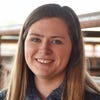
Considering a creep feed program? This year, it’s important to consider a lot of factors — including math.
For a commercial producer, especially, implementing creep feeding may not make sense financially, says Dan Shike, associate professor in animal sciences at the University of Illinois. He grew up on an Illinois cow-calf operation and focuses on management and nutritional methods that enhance reproduction, productivity and efficiency of beef cattle. According to CME Group, last week, July ’21 corn was up to $6.64 per bushel, and June ’21 live cattle was down to $116.35 per cwt.
With corn prices continuing upward and live cattle on a downward trend, calves may not put on enough extra pounds before weaning to be profitable, Shike says.
However, a creep feed program for a few weeks is justifiable due to the benefits during the weaning transition, Shike says. Creep feeding helps calves learn to eat grain out of a bunk, which makes for a smoother transition and should reduce weaning stress.
Nutrient availability is another reason why producers may implement creep feeding to calves.
Dry summer weather can limit forage availability, Shike says, requiring cattle producers to supplement with a creep feed program or start creep feeding earlier than usual. Likewise, if dams are low milk producers, then creep feeding can be another way to fill in nutritional gaps.
When it comes to creep feeding, every operation’s situation is different, Shike says. Creep feeding may not make sense for commercial producers this year. However, creep feeding could be an important tool for fall marketing of seedstock and show cattle, he says, because it helps get calves market-ready by fall.
Feeding a ration
How do you choose the right ration for your calves — especially among so many commercial choices, including pelleted, texturized and commodity blend rations?
Drew Stollard, nutritional sales representative for Earlybird Feed and Fertilizer, Bloomington, Ill., says there is no right answer for ration type, but instead, it comes down to nutrient makeup.
“As a general rule of thumb for us, we try to get people to start out on a 15% to 16% protein creep feed,” he says. “As the calves get older, we back the protein down to 14%, and once calves are weaned, they are usually transitioning to a texturized feed with a 12% to 14% protein content.”
In general, Stollard recommends creep feeding calves at 2 to 4 months of age. An operation may start animals at 2 months of age to put the pounds on commercial calves or to get purebred calves ready for fall sales.
Another key component in successful creep feeding is amount fed per day.
Some creep feeders are self-fed; however, producers should keep in mind the amount of feed each calf is eating daily, Stollard says. Typically, feeding 1.5% to 2% of body weight will aid in growing, developing and adding fill to calves.
Improving carcass quality
Without a doubt, creep feeding provides benefits such as filling nutritional gaps and easier weaning transition, but it can also enhance carcass quality.
Research at U of I shows that creep feeding calves a high-grain, high-starch ration for 60 to 100 days prior to weaning can result in improved marbling and quality grades in the finishing phase, Shike says. This finding is likely an advantage of early weaning due to some marbling development occurring prior to 200 days of age.
If calves are provided enough grain or high-starch substrate 200 days prior to weaning, then the number of intramuscular fat cells will increase, he says. This will allow for more marbling cells to be filled with fat in the finishing phase.
To improve carcass quality through this method, producers need to feed calves a higher grain ration for 60 to 100 days, according to Shike. That will obviously cost more, so he recommends that scenario when producers are retaining full ownership throughout the entire production cycle.
About the Author(s)
You May Also Like






